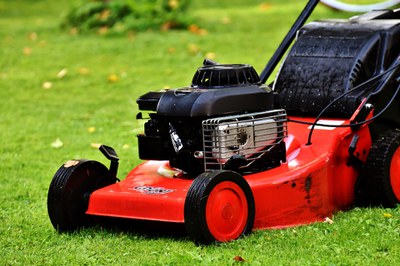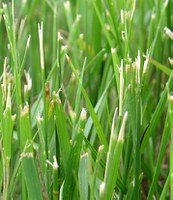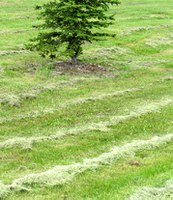How to Mow Your Lawn
Do you want a beautiful landscape? Of course! Start with a healthy lawn. One of the most important factors in growing a healthy lawn is to mow it properly. Here's how:
Cut your lawn tall. A tall turf will:
-- shade the soil and protect it from summer’s heat;
-- develop a deep root system; and
-- reduce weed populations since the tall grass blades shade out and smother emerging weed seedlings.
Cut your lawn between 2.5 and 3.5 inches. Tall heights are especially beneficial during summer and for low-maintenance conditions. The first lawns that turn yellow in summer are the lawns that are cut too short.
Follow the “one-third rule.” Avoid removing more than one-third of the grass blade at any time. Cutting too much of the grass will slow its regrowth. It will expose the soil more, which leads to drought stress and the establishment of more weeds. Using this “one-third rule” as a guide, if you kept your lawn at 3 inches, you would cut it when it is no more than 4.5 inches tall.
Thus, the timing for mowing your lawn is dependent on its growth. You may need to mow every 5 days in spring, but every 5 weeks in summer.
Let the grass clippings fall. You don’t need to collect clippings. Your lawn wants those clippings. The clippings will shade the soil and conserve moisture. The clippings will recycle nutrients to the soil—it is like getting a free fertilization every year.
If you mow regularly, clippings will not create a thatch problem. Clippings are mainly water and they will quickly decompose.
The exception is when your lawn gets neglected and grows very tall. Excessively tall grass when mowed can gather in clumps on the lawn (see photo). This can smother the turf. Tall blades can get more fibrous and become slower to decompose—this can lead to an accumulation of thatch. In these cases, it is wise to collect these clippings.
Mow when grass is dry. This will reduce clumping and help to mulch the grass blades finer.
Use a sharp mower blade. A sharp blade will make a clean cut. Dull blades will tear the tips of leaf blades (see photo). The damaged leaf blades will develop a brown tip. Frayed blades lose water more quickly and become more susceptible to diseases. Depending on how much turf you cut, you may need to sharpen or replace your blade every year.
Written by Tom Kalb, Extension Horticulturist, North Dakota State University.








